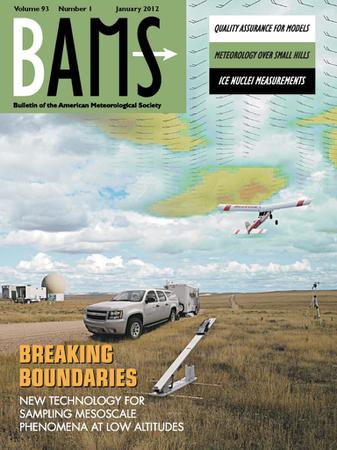大量非洲尘埃的全球环流及其对偏远地区大气环流的影响
IF 6.9
1区 地球科学
Q1 METEOROLOGY & ATMOSPHERIC SCIENCES
引用次数: 0
摘要
摘要 来自北非的大气沙尘是全球最大、最持久活跃的沙尘源,在北半球广泛扩散,对地球环境演变起着至关重要的作用。2020 年 6 月 7 日-24 日期间,发生了一次极强的沙尘天气,其向西扩散受北大西洋涛动(NAO)的调节,向东扩散受欧洲阻塞的调控,最终导致非洲沙尘的全球环流。与欧洲阻挡偶极相连的地中海低压是促进沙尘东移的关键。这次创纪录的非洲沙尘事件导致印度东北部地区降水量显著减少,日降水量减少了 0.98 毫米,北美中部地区日降水量减少了 1.55 毫米,这归因于沙尘引起的辐射加热对大尺度环流的影响。它引发了罗斯比波列,在印度东北部上空造成异常高压,削弱了印度夏季季风,从而抑制了降水的出现。沙尘引起的辐射加热也支持了北美上空异常暖高气压的稳定,进一步抑制了大西洋水汽的输入。北美和印度上空的环境湿度和大气不稳定性也呈现出一致的变化,其特点是下降运动加强,湿对流急剧减少。这项研究首次报告了环全球输送的非洲沙尘对区域环流的强烈调节作用,尤其是在亚洲和北美洲。对湿对流造成意想不到后果的新方面表明,沙尘可能在全球气候变化中发挥更广泛的作用。本文章由计算机程序翻译,如有差异,请以英文原文为准。
The Circum-global Transport of Massive African Dust and its Impacts on the Regional Circulation in Remote Atmosphere
Abstract Atmospheric dust from the North Africa, the largest and most persistently active dust source over the world, spreads widely in the Northern Hemisphere and plays essential roles in the Earth environment evolution. During June 7th-24th 2020, an extremely strong dust occurred with its westward spreading modulated by the North Atlantic Oscillation (NAO), and its eastward spreading regulated by European blocking, ultimately resulting in the circum-global transport of African dust. The Mediterranean low pressure linked to the European blocking dipole was the key to facilitating the eastward transport of dust. This record-breaking African dust episode caused a notable diurnal precipitation decrease of 0.98 mm day−1 over northeastern India and decrease of 1.55 mm day−1 over central North America, which was ascribed to the effect of dust-induced radiative heating on large-scale circulation. It triggered Rossby wave train and caused an anomalous high pressure over northeastern India, which weakened the India summer monsoon and consequently inhibited the occurrence of precipitation. Dust-induced radiative heating also supported the stability in the anomalous warm high over North America, further repressing import of moisture from Atlantic. Ambient moisture and atmospheric instability also presented consistent variation over North America and India characterized as strengthen descending motion and sharply reduced moist convection. This study reports, for the first time, the strong modulation of regional circulation by circum-globally transported African dust especially in Asia and North America. The new aspects on the unexpected consequences to moisture convection indicate broader roles that the dust may play in the global climate change.
求助全文
通过发布文献求助,成功后即可免费获取论文全文。
去求助
来源期刊
CiteScore
9.80
自引率
6.20%
发文量
231
审稿时长
6-12 weeks
期刊介绍:
The Bulletin of the American Meteorological Society (BAMS) is the flagship magazine of AMS and publishes articles of interest and significance for the weather, water, and climate community as well as news, editorials, and reviews for AMS members.

 求助内容:
求助内容: 应助结果提醒方式:
应助结果提醒方式:


